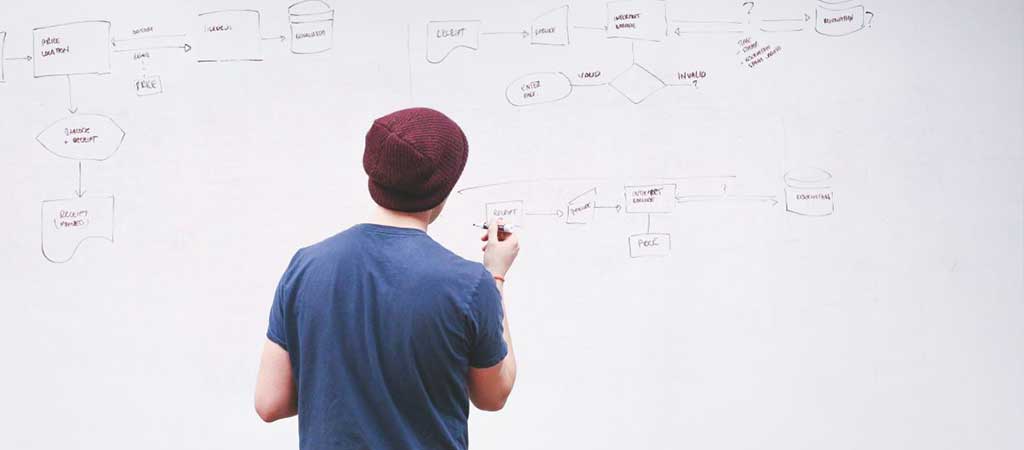How workflow management system boosts your productivity
Just like your skilled and talented employees, a well-designed and implemented workflow management system is an asset to your organization. Now you will ask why?
It is so because it is an automated version of your manager or you can say a virtual manager who can define tasks, the outcome of tasks and can assign it to the respective team members.
Workflow Management is an ideal way to make your existing business processes from good to great as it ensures that the defined tasks get carried out by the team members they are assigned to, as per the timelines.
What is workflow management?
Before we skip to how workflow management will help in scaling up your productivity, let us know what exactly workflow management is.
The definition of workflow management can be stated as the automation of your company’s tasks and processes through mapping, planning, and coordinating all parts of your business structure.
A workflow management system helps teams with everything from managing all points of user interaction on your customer success journey, i.e. from sales to service delivery, to dealing with your day-by-day administrative tasks.
Reasons why the workflow management process is important to boost your productivity
The core benefit of a workflow management system is to improve the efficiency of your team to get more done with less. The following are some of the key benefits of a good workflow management system.
1. No redundant tasks
What are redundant tasks?
Redundant tasks are generally those boring, mundane, time consuming, repetitive tasks such as follow-ups, reminders, checking stats, delivering reports, generating documents etc.
There are many redundant tasks in every business process and in every department of every company. I bet your company isn’t very different from the norm.
These repetitive tasks are a part of every employee’s schedules, even high-level management. For example, in a recent interview with an Executive Director of a large engineering firm with about 500 people in his department, I learned that he was spending almost 3 hours on average on a daily basis to review and approve mundane managerial requests such as travel requests, advance and reimbursement asks, document signing etc.
What a waste of critical managerial time? Don’t you think so?
It is noticed in most of the organizations, 20% of the CEO’s time is spent on the work that could be easily automated or delegated.
Workflow management systems eliminate or at least reduce such redundant tasks and delegate these repetitive tasks. When such tasks are delegated, employees can focus their intelligence and time on more high-value tasks that can result in high value and more important tasks.
2. Betterment of accountability


To achieve transparency you have to define specific tasks for all the steps in the workflow. With the help of a workflow management system, managers can track employees’ work more effectively, and can also hold employees accountable for defined and measurable goals.
With common features for auto-generated reminders, notifications and deadlines for due dates, a workflow management process can help them move away from managing every small thing and can run the process with no extra efforts.
3. Less scope for manual errors
One of the major challenges that organizations face in implementing their processes efficiently is human error.
More errors mean more repetitive work, which means more boredom and tiredness resulting in higher propensity for more errors. It is a vicious cycle with every redundant and repetitive task. It is best to eliminate manual inefficiencies by automating such repetitive tasks by adopting a workflow management system.
By removing redundancies and improving communication, the workflow management system lessens the scope for errors.
4. Effective task management


Workflow management process and workflow mapping is in simple words defining who will be doing what and at what stage of a particular business process.
A well-defined workflow process or map helps in streamlining the work that needs to get done. The core benefit of this is that everyone knows what is expected out of them and at what stage and timeline. Because of the mapping feature of workflow management software that helps define the various tasks in the business process, employees start to gain a clearer understanding of their job responsibilities and scope. This directly improves the efficiency of the team to manage their tasks and get things done on time and as planned.
Not everyone is a super mommy who champions the art of multitasking!
5. Collaboration and communication becomes better


When there are different processes and tasks involved while doing a project then the use of various tools and platforms are also there to execute and track them. Employees of your organization and departments may be using different tools to carry out tasks, track their time and collaborate with their teams on projects.
For example, your two different departments like IT and Sales may be using two different software like JIRA and Asana respectively to manage their tasks. But this use of different software scatters the data around in an ecosystem of different tools results in extremely inefficient collaboration on critical business processes.
The same applies to communication for teams – especially remote teams and with virtual assistants. Communication might be happening on email, text, messenger, chat or any other social media which often results in lost messages and lost resources, frustration and delays.
Workflow automation platforms like Orgzit.com bring both communication and collaboration. It allows people to communicate effectively, and increase their productivity.
6. A centralized place for resource database
Workflow Management platforms have the advantage of connecting multiple sources of information into a single streamlined flow of information and relevant resources along with enabling intelligent communication between teams by bringing them together on a single platform.
So if you have to find something that you sent to your team or to a client some time ago, you can find it right in your communication/resources channel instead of having to scroll through all your email or Slack channels.
A workflow process management system can become a central storehouse for all your organizational data. It binds the data together to departments, employees or processes.
7. Better information about organizational data
Having repeatable processes is not the end of workflow management. There is no way of knowing if your processes are helping (or not) if you’re not actively measuring the outcome of your processes.
When you use a centralized resource database, data can be analyzed at an organizational level along with studying it at other sub-levels.
Workflow management platforms also provide advanced analytics solutions which can give deep insights into data, that data will allow you to make much better decisions for your business. It also saves employees time and reduces errors by using automated report generation and delivery.
8. A defined flow for all
A workflow or you can say the blueprint of the plan of the project which is made by the business leader or management keeping the employees completely unaware of it.
If your employees regularly come up to you and ask “what do I do next?” or “how do I do this?”, your workflows are not implemented efficiently.
Your organization will have better transparency of the business process with an automated workflow management system. A workflow management software helps in delineating a clear list of steps and deadlines to follow for the tasks, for each and every employee involved.
As a result, overall team collaboration is more efficient and tasks get completed as planned.
A lot of times, the process may have new people join and old people leave in between due to various reasons. In such cases, a workflow management system makes it fairly easy for the new joiners to get accustomed to the new environment and way of doing things rather than following some ad hoc processes. Everyone saves time as new team members are onboarded efficiently and a lot of valuable time is saved.
Conclusion
Workflow management is a win-win for businesses.
As you read in the article above, it provides both the employees and business owners with a better, more structured, and efficient way to communicate and collaborate.
At Orgzit, we’ve built a no-code collaboration and workflow management solution for businesses to build customizable applications for their business processes that are required to get work done if your business.
We would love to learn more about your line of work and discuss the issues you might be facing due to poor workflow management systems in your current setup. We would love to talk to you and share with you how we have 100s of business teams to get more productive using Orgzit.
Get in touch for a free consultation today!









